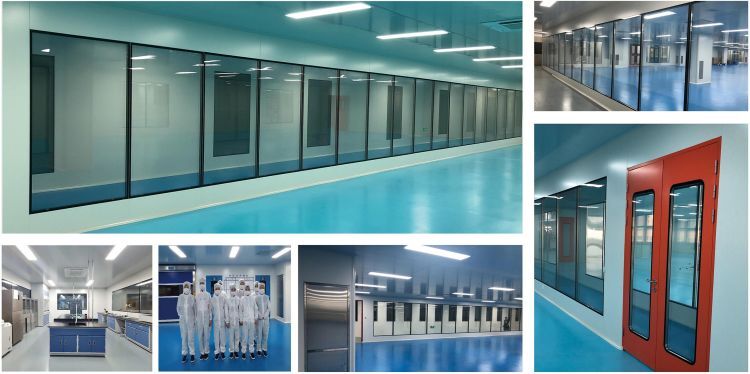How To Choose The Hardwall And Softwall Of Cleanroom
- 2024-01-04
- View 14
The conception and planning of a cleanroom depends primarily on the requirements placed on it. In some cases a grey room is already sufficient, but especially in the technology, research and pharmaceutical sectors as well as in the food industry strict guidelines apply. How to choose the hardwall cleanrooms and softwall cleanrooms?

Nevertheless, the decision on the type and classification of a cleanroom should be preceded by the consideration whether a cleanroom is also the solution in itself for the process to be considered. Each clean solution has advantages and disadvantages. These have to be evaluated and the decision has to be made whether a cleanroom or another clean solution, e.g. a workbench solution or minienvironments, better meet the requirements. If a cleanroom should be regarded as the solution, as a result of these considerations, despite high investment and running costs, then the cleanroom or cleanroom cabin solution suitable for the processes should be considered.
Cleanrooms can be realized in different ways
The particle concentration is the standard in technical area. Depending on the application, it is defined in DIN ISO 14644-1, the classes range from ISO 1 to ISO 9, with ISO 1 being the best class with the fewest particles. Microbiological requirements must also be considered in life science applications.
You can find out more about the link and differences between the guidelines here.
The demands placed on a cleanroom therefore vary hugely. It is therefore imperative that a wide variety of models and concepts are used in practice.
Basically, two proven Systems can be distinguished:
Cleanroom tents or cleanrooms with foil curtains, so-called softwall cleanrooms cabins.
Cleanrooms with fixed walls or panels made of various materials, so-called hardwall cleanrooms cabins.
In practice, both versions are referred to as cleanroom cabins. Depending on the application, these can have only a few square meters, but can also fill entire halls. Room-in-room solutions are useful in most cases.
Which solution makes sense for your application is not just a question of price. In many cases the differences between hardwall cleanrooms or softwall cleanrooms solution are only marginal.
Keep an eye on the requirements of your application. In general, almost all applications can be implemented with both approaches. But in practice the strength and weaknesses of the used method quickly become apparent.
softwall Cleanrooms solutions
Especially when it comes to save space, softwall cleanrooms solutions are often the answer. Working in a cleanroom like a tent is not complicated by rigid walls. In many cases, foil solutions can also provide faster access.
However, the higher the air supply inside the cleanroom, the greater the risk of the films bulging or sticking outwards. In practice, medium-height films have proven their worth, guaranteeing a constant air flow rate.
The basic requirement for the efficiency of a cleanroom with softwall cleanrooms solution is regular cleaning of the foils. This also poses a certain challenge to the staff, as softwalls are usually more difficult to clean than hard walls, as they avoid the wipe due to their flexibility.
Foils also tend to outgas, which means that they spread a plastic smell especially when they are new. So consider whether a hardwall solution could be considered for your specific application.
hardwall Cleanrooms solutions
Aluminium profile frame systems or panel systems can be used.
A wide variety of materials are available for the wall elements, from plastics to aluminium panels. Every material has its advantages and disadvantages, which should be included in the planning:
PVC-surfaces: Easy-care, but not necessarily scratch-resistant. The cheapest solution. In individual applications, questions are asked about fire protection with regard to the formation of smoke in the event of fire.
Polycarbonat: Sometimes very soft, usually slightly more durable than PMMA. Not always scratch-resistant. Also transparent available.
PMMA: For transparent surfaces.
Steel plate: high stability, risk of corrosion without painting. Powder coated is the best solution.
Stainless steel: Very stable. The surface should be smooth (brushed or polished).
Aluminium plate: Light and stable. The surface should be anodised and/or powder coated.
Glass: Generally the cheapest solution. In practice, single-pane safety glass and laminated safety glass are used and guarantee a high level of shatter protection
Let us advise you on the selection of the right cleanroom cabin
The planning of a cleanroom is subject to many different factors, the mostly modular structure is only one of the challenges.
Which wall solution makes sense for your cleanroom cabin depends on the degree of airborne particulate cleanliness class you are aiming for. The higher the requirements, the sooner hardwall cleanrooms solution is recommended.
We will be happy to advise you and help you with the individual construction of your cleanroom.
